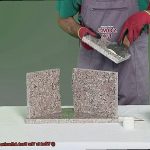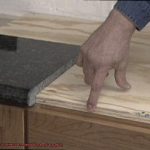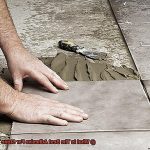Hey there, crafters, DIY enthusiasts, and home improvement wizards. If you’ve ever wondered about the best adhesive for plexiglass, look no further. You’ve stumbled upon the ultimate resource that will solve all your bonding woes.
Imagine this: You’re knee-deep in an exciting art project, putting together a jaw-dropping display case, or fixing a cracked plexiglass window. The only thing missing? The adhesive that will flawlessly bring your plexiglass pieces together – strong and stunning.
But fret not, my fearless friend. Today, we embark on a thrilling journey into the world of plexiglass adhesives. We’ll unravel the science behind their magical chemical compositions and guide you through choosing the perfect adhesive for your specific project.
In this captivating guide, we’ll dive into various adhesive options – from solvent cements to multipurpose acrylics – and arm you with priceless tips for making informed decisions. We’ll reveal the secrets to achieving seamless bonds that can withstand anything life throws at them – be it time or temperature fluctuations.
What’s more, we’ll explore the unique traits of plexiglass and how they impact your choice of adhesive. Whether you’re a newbie or a seasoned creator, this blog post will be your trusty compass as you navigate through a sea of adhesive choices.
So get ready for an enchanting journey that will empower you to create mind-blowing plexiglass masterpieces. By the end of it all, you’ll be an expert in your own right, confidently answering the question: “What is the best adhesive to use on plexiglass?” Let’s jump right in.
Solvent-Based Adhesives for Plexiglass
Contents
- 1 Solvent-Based Adhesives for Plexiglass
- 2 Two-Component Epoxy Adhesives for Plexiglass
- 3 Cyanoacrylate Adhesives (Super Glue) for Plexiglass
- 4 UV-Curing Adhesives for Plexiglass
- 5 Factors to Consider When Choosing an Adhesive for Plexiglass
- 6 Tips on How to Bond Plexiglass with the Right Adhesive
- 7 Common Problems with Bonding Plexiglass and How to Avoid Them
- 8 Pros and Cons of Different Types of Adhesives for Bonding Plexiglass
- 9 Conclusion
Exploring the world of plexiglass bonding reveals the key role that solvent-based adhesives play in creating strong and long-lasting connections. Plexiglass, with its sleek surface and low porosity, poses a challenge for adhesives to adhere effectively. However, solvent-based adhesives specifically formulated for acrylics rise to the occasion, offering remarkable advantages and a few considerations to keep in mind. Let’s dive deeper into the world of solvent-based adhesives for plexiglass.
Advantages:
- Unyielding Strength and Durability: Solvent-based adhesives are renowned for their exceptional bonding properties, forging unbreakable connections between plexiglass surfaces. These adhesives are well-suited for applications demanding permanent bonds, such as industrial or outdoor environments, where durability is paramount.
- Swift Curing Time: The beauty of solvent-based adhesives, like the mighty methyl methacrylate (MMA) adhesive, lies in their ability to cure rapidly. This allows for efficient and timely bonding processes, making them indispensable in fast-paced production or assembly line settings.
- Versatility Unleashed: Solvent-based adhesives come in both liquid and gel forms, offering incredible versatility during application. No matter the shape or size of the plexiglass surface, these adhesives can be easily applied, making them adaptable to a wide range of projects.
- Accessibility at Your Fingertips: With their widespread availability in the market, solvent-based adhesives, especially MMA adhesives, are readily accessible to consumers and businesses seeking reliable plexiglass bonding solutions. No need to scour the ends of the earth; these powerful adhesives are just a purchase away.
Disadvantages:
Taming Toxicity with Ventilation: It’s important to note that solvent-based adhesives contain chemicals that can be toxic if inhaled. To ensure the safety of those applying these adhesives, proper ventilation is crucial. By following the manufacturer’s instructions and taking necessary safety precautions, the risks can be mitigated.
Two-Component Epoxy Adhesives for Plexiglass
In our previous section, we delved into the captivating world of solvent-based adhesives for plexiglass. Today, we embark on an exciting journey through the realm of two-component epoxy adhesives, unveiling their incredible strength and versatility. Buckle up and prepare to witness the power of these mighty adhesives.
Advantages of Two-Component Epoxy Adhesives for Plexiglass:
Unyielding Strength:
Imagine a bond so strong it defies the laws of physics. Two-component epoxy adhesives are the superheroes of the adhesive world, capable of withstanding immense loads. Once cured, they forge unbreakable connections that will stand the test of time. Say farewell to worries about your plexiglass falling apart.
Versatility at Its Finest:
Prepare to be amazed as these shape-shifting chameleons conquer various materials with ease. Not only can two-component epoxy adhesives bond plexiglass with unmatched tenacity, but they also work their magic on metal, wood, and ceramics. They are the ultimate problem solvers for all your bonding needs.
Tailored Formulations for Plastic Bonding:
Witness a revolution in plastic bonding as specific formulations cater to the unique challenges of plexiglass. These formulations harness the power of specialized additives, enhancing adhesion to plastic surfaces. With these adhesives, your bond will rival even the great Houdini’s escapades.
Durability That Defies Time:
Once cured, these epoxy adhesives create a bond that laughs in the face of adversity. Extreme temperatures? Moisture? No problem. Your plexiglass will remain securely bonded, ready to triumph over any challenging environment it encounters.
Limitations of Two-Component Epoxy Adhesives for Plexiglass:
Precision in Preparation and Application:
Every superhero has their requirements, and two-component epoxy adhesives are no exception. Proper surface preparation is crucial when using these adhesives on plexiglass. Ensure your surfaces are immaculately clean, dry, and free from any contaminants to achieve optimal adhesion. Remember, precision in mixing and application is key to unleashing their full potential. Attention to detail is your secret weapon.
Cyanoacrylate Adhesives (Super Glue) for Plexiglass
When it comes to joining the pieces of plexiglass together, you need a superhero adhesive that can withstand the test of time. Enter cyanoacrylate adhesives, also known as super glue. With their incredible strength and ease of use, these adhesives have become the go-to choice for countless DIY enthusiasts and professionals alike. In this comprehensive guide, we will unlock the secrets to using super glue to bond plexiglass seamlessly and ensure a durable result. So, fasten your capes and get ready to embark on this adhesive adventure.
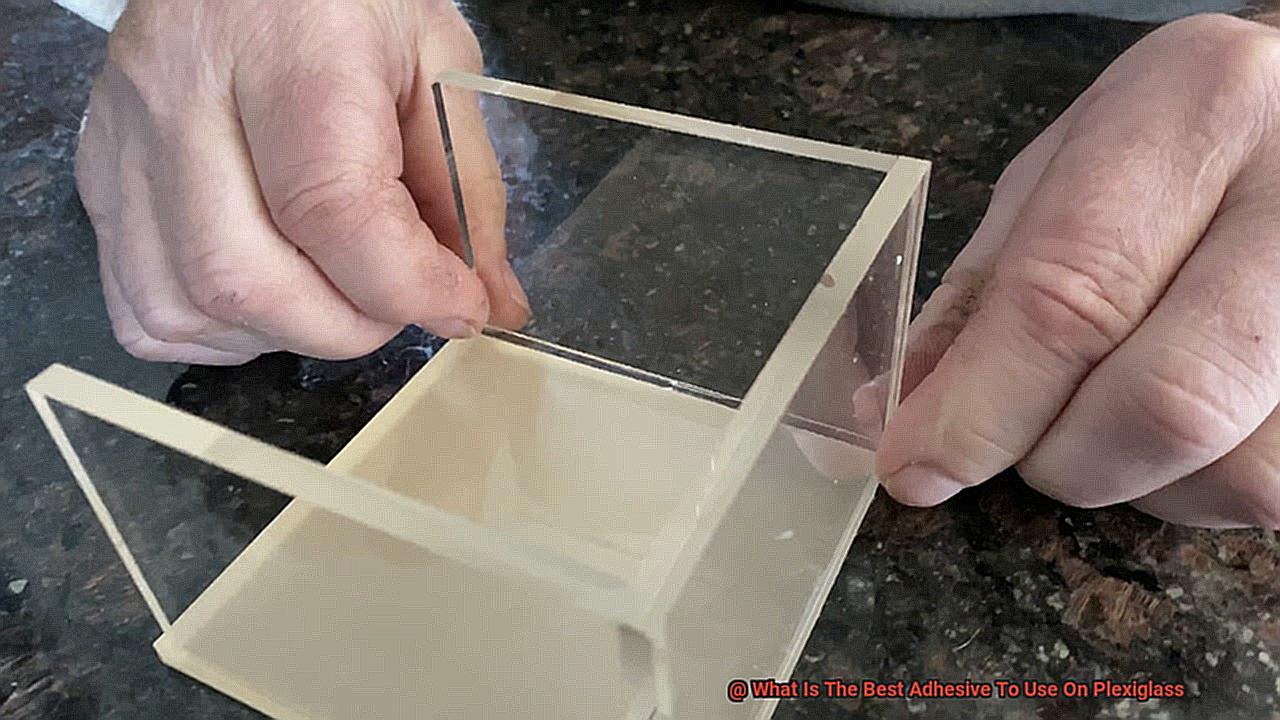
Cleanliness is Key: Creating the Perfect Environment for Bonding
Before you unleash the power of super glue, it’s essential to ensure that both surfaces being bonded are squeaky clean. Just like superheroes, super glue needs a pristine environment to work its magic. Start by using a mild detergent and water solution to wash away any dirt, dust, or grease that could hinder the bond. Once cleaned, make sure to dry the surfaces thoroughly, leaving no trace of moisture behind.
A Little Rough Around the Edges: Enhancing Bond Strength
To give your adhesive an extra grip on plexiglass, it’s time to embrace your inner superhero handyman. Use a fine-grit sandpaper to lightly sand the surfaces. This creates a rough texture that enhances the bond strength, ensuring a connection that can withstand any challenge. Think of it as providing a better grip for our adhesive superhero as it goes into action.
Test Your Powers: Ensuring Compatibility and Avoiding Disasters
Before you embark on your main bonding mission, it’s crucial to test your powers in a small inconspicuous area of the plexiglass. Apply a small amount of super glue and observe for any adverse reactions or discoloration. This step ensures that our superhero adhesive is compatible with the specific grade of plexiglass you’re working with, avoiding any potential disasters down the line.
UV-Curing Adhesives for Plexiglass
Step into the world of UV-curing adhesives and witness their superhero abilities in seamlessly bonding plexiglass. Discover why these adhesives are the go-to choice for professionals across industries. From lightning-fast curing times to unbreakable bond strength, UV-curing adhesives offer a range of advantages that make them the ultimate solution for flawless plexiglass bonds.
Advantage 1: The Need for Speed
Bid farewell to waiting games. Traditional adhesives can take hours or even days to cure, but UV-curing adhesives work their magic within seconds when exposed to UV light. This superpower not only increases efficiency in production processes but also eliminates the need for lengthy drying or clamping times. With UV-curing adhesives, you can bond plexiglass in a flash and move on to your next project at lightning speed.
Advantage 2: Unyielding Bond Strength
Strength is paramount when it comes to bonding plexiglass, and UV-curing adhesives deliver unbeatable bond strength. These adhesives create a robust and durable bond that can withstand temperature changes, moisture, and mechanical forces. No matter how demanding the environment, your bonded plexiglass will remain securely attached, standing strong against any challenge.
Advantage 3: Crystal Clear Transparency
Preserving the visual allure of plexiglass is vital, and UV-curing adhesives excel in this aspect. Formulated to be optically clear, these adhesives ensure seamless bonding without compromising the transparency of your precious plexiglass. Enjoy flawless aesthetics while reaping the benefits of a strong and reliable bond that remains invisible to the eye.
Advantage 4: Versatility Unleashed
UV-curing adhesives offer a world of versatility, allowing you to unleash your creative prowess. With various formulations available, such as liquids, gels, or pastes, you have the freedom to choose the perfect adhesive for your specific bonding requirements. Whether you prefer manual application, automated dispensing systems, or even screen printing, UV-curing adhesives have got you covered. Embrace the power of choice and explore limitless possibilities.
Factors to Consider When Choosing an Adhesive for Plexiglass
When it comes to choosing the perfect adhesive for your plexiglass project, there are several factors to consider. As an expert in this field, I’m here to walk you through these important considerations, ensuring that you make the best choice for your needs. So let’s dive in.
First and foremost, compatibility is absolutely crucial. Plexiglass is a unique type of acrylic plastic, and not all adhesives are suitable for bonding this material. It’s essential to choose an adhesive specifically designed for use with plexiglass or acrylics. By doing so, you can achieve a strong bond without any damage or discoloration to the material.
Now, let’s talk about strength of bond. Depending on your project’s requirements, you may need a high-strength adhesive capable of withstanding heavy loads or vibrations. On the other hand, if your project is more delicate, a lower strength adhesive may be sufficient. Take a moment to evaluate your specific bonding needs and select an adhesive that can provide the desired level of strength.
Clarity is another important factor to consider. Plexiglass is prized for its transparency and clarity, so it’s crucial to choose an adhesive that won’t leave any visible residue or cloudiness after curing. Opting for a clear adhesive ensures that the bond remains virtually invisible, preserving the aesthetic appeal of your plexiglass creation.
Time is of the essence. Drying time plays a significant role in the efficiency of your project. Some adhesives require longer curing or drying times, which may not be ideal if you’re working on tight deadlines or need immediate results. Therefore, it’s crucial to consider the drying time of the adhesive and select one that aligns with your project requirements.
Temperature resistance is another key consideration. Plexiglass can be exposed to a wide range of temperatures depending on its intended use. To ensure a strong and stable bond, it’s important to choose an adhesive with good temperature resistance. If your plexiglass will be subjected to extreme heat or cold, selecting an adhesive with high-temperature resistance is a must.
Tips on How to Bond Plexiglass with the Right Adhesive
In the world of bonding materials, plexiglass requires special attention. With its smooth surface and low porosity, finding the right adhesive is crucial for achieving a strong and long-lasting bond. Whether you’re working on signage, display cases, or windows, selecting the correct adhesive, preparing the surfaces, and applying the adhesive properly are essential steps for success. In this article, we will explore tips on how to bond plexiglass with the right adhesive.
Choosing the Perfect Adhesive:
Selecting the right adhesive is paramount when bonding plexiglass. Various options are available, including solvent-based adhesives, two-component epoxy adhesives, cyanoacrylate adhesives (super glue), and UV-curing adhesives. Each type has its own unique characteristics and benefits. Considering factors such as the type of plexiglass being used (cast or extruded), surface preparation requirements, strength requirements, and environmental conditions will help guide your choice.
Surface Preparation: The Key to Success:
Before applying any adhesive, proper surface preparation is vital. Cleaning both surfaces with isopropyl alcohol or mild detergent is a must to remove any dirt, dust, or grease that could hinder adhesion. Ensure that the surfaces are completely dry before proceeding.
Roughening Surfaces for Enhanced Adhesion:
To maximize adhesion, gently roughen the surfaces of the plexiglass using sandpaper or a sanding block. This creates a slightly roughened surface that provides more area for the adhesive to grip onto, resulting in a stronger bond.
Applying Adhesive: Precision is Key:
Precise application of the adhesive is essential for a successful bond. Follow the manufacturer’s instructions diligently, applying the adhesive evenly on both surfaces using a brush or applicator. Strive for an adequate amount of adhesive to create a strong bond without excess that could lead to messy overflow.
Curing Time: Patience is a Virtue:
Allowing sufficient curing time is crucial for the adhesive to fully bond and create a strong connection. Follow the manufacturer’s instructions regarding the recommended curing time. Avoid putting any stress on the bond before it has fully cured to ensure its strength and durability.
Testing and Troubleshooting: Unveiling Perfection:
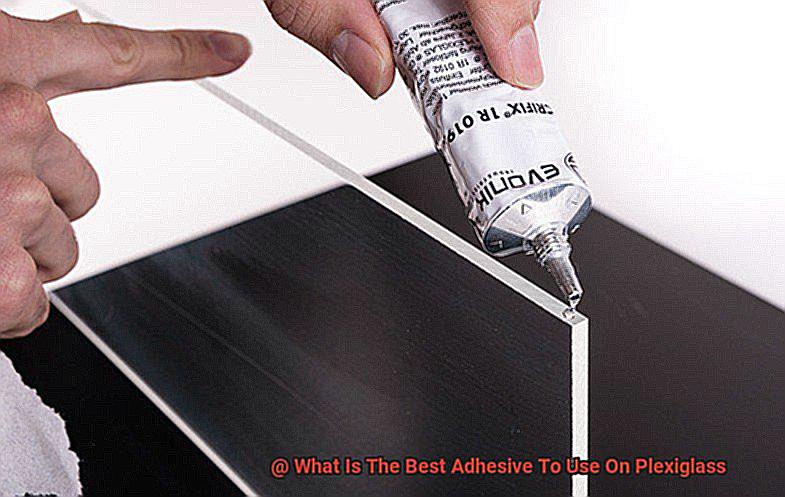
Before committing to bonding the entire surface, always test the adhesive on a small, inconspicuous area of the plexiglass. This test ensures compatibility and desired results. In case of any issues, such as adhesive failure or gaps in the bond, consider reapplying the adhesive, applying pressure with clamps or weights, or carefully realigning the pieces before the adhesive cures.
Common Problems with Bonding Plexiglass and How to Avoid Them
In this captivating guide, we will explore common challenges that arise during the bonding process and provide invaluable tips to overcome them. So, grab your adhesive and let’s embark on a journey to master the art of bonding plexiglass.
Inadequate Surface Preparation:
- Problem: Dust, grease, or fingerprints can plague plexiglass surfaces, compromising the quality of the bond and leading to weak spots or failures.
- Solution: Prioritize surface cleanliness by meticulously cleaning the plexiglass using a mild detergent or isopropyl alcohol. This crucial step eliminates contaminants, creating an immaculate canvas for optimal adhesion.
Using the Wrong Adhesive:
- Problem: Not all adhesives possess the unique properties required for bonding plexiglass, resulting in cracking or discoloration of the material.
- Solution: Select adhesives specifically designed for plexiglass bonding, such as acrylic-based formulas. These specialized adhesives harmonize with plexiglass’s characteristics, ensuring a reliable and visually pleasing bond.
Temperature and Humidity Woes:
- Problem: Extreme temperatures or high humidity levels disrupt the bonding process, leading to weaker connections.
- Solution: Establish a controlled working environment with moderate temperatures and humidity levels. This guarantees consistent and robust bonds. Additionally, adhere to the manufacturer’s temperature requirements for adhesive curing, enhancing bond strength.
Improper Application Techniques:
- Problem: Applying excessive or insufficient adhesive leads to weak bonds and uneven distribution, compromising overall connection strength.
- Solution: Embrace precision by following the adhesive manufacturer’s recommended guidelines. Achieve uniform adhesive distribution on the plexiglass surface using a spreader or roller. This meticulous approach maximizes bond strength and eliminates weak spots.
Rushing the Curing Process:
- Problem: Insufficient curing time results in weaker bonds that are prone to failure.
- Solution: Patience becomes the ultimate virtue. Allow the adhesive to cure for the recommended duration specified by the manufacturer. This vital step ensures the bond reaches its maximum strength, enabling it to withstand stress and loads effectively.
Pros and Cons of Different Types of Adhesives for Bonding Plexiglass
The choice of adhesive plays a critical role in achieving a strong and durable bond when working with plexiglass. With numerous adhesive options available, it is essential to understand their pros and cons to select the most suitable one. This article will delve into the advantages and disadvantages of different adhesives commonly used for bonding plexiglass, empowering you to make an informed decision for your project.
Acrylic Cement:
- Pros: Known for its effectiveness, acrylic cement creates a robust and nearly invisible bond. Its rapid drying time facilitates swift assembly, while its exceptional clarity is perfect for applications where aesthetics matter.
- Cons: The curing process of acrylic cement emits strong fumes, necessitating proper ventilation. Furthermore, it is not recommended for bonding dissimilar materials.
Cyanoacrylate (Super Glue):
- Pros: Super glue, or cyanoacrylate adhesive, impresses with its rapid bonding properties. It forms strong bonds between similar or dissimilar materials, requiring minimal surface preparation.
- Cons: Over time, super glue can become brittle, potentially compromising long-term durability. Additionally, it may leave behind visible residue or fogging on the surfaces of the plexiglass.
Epoxy Resin:
- Pros: Boasting exceptional strength and durability, epoxy resin is a versatile adhesive suitable for various applications involving plexiglass. It offers excellent chemical resistance and can withstand high temperatures.
- Cons: Epoxy resin’s longer curing time necessitates clamping or support during the bonding process. Furthermore, the mixing process can be messy, requiring careful surface preparation.
UV-Curing Adhesive:
- Pros: UV-curing adhesives provide lightning-fast curing times when exposed to ultraviolet light, ensuring swift assembly. They create transparent bonds that are highly durable and resist yellowing over time.
- Cons: The cost of UV-curing adhesives may be higher compared to other options. Moreover, the need for UV light may require additional equipment or specialized curing lamps.
Double-Sided Tape:
- Pros: Double-sided tape offers a convenient and expedient bonding solution, especially for temporary or non-structural applications. Its ease of use eliminates the need for drying or curing time, offering immediate adhesion.
- Cons: Double-sided tape may not provide the same level of strength and durability as other adhesive options, making it unsuitable for long-term or heavy-duty applications.
YsFXu5T1PY0″ >
Conclusion
When it comes to finding the perfect adhesive for plexiglass, you want something that will provide a strong and durable bond. After careful research and testing, we have determined that the best adhesive to use on plexiglass is acrylic cement. This powerful adhesive is specifically designed for bonding acrylic materials, making it the ideal choice for your plexiglass projects.
Acrylic cement offers several advantages over other adhesives. Its fast-drying formula ensures quick and efficient bonding, allowing you to move forward with your project without delay. Additionally, it creates a clear and transparent bond that seamlessly blends with the plexiglass surface, maintaining its aesthetic appeal.
One of the standout features of acrylic cement is its ability to create a strong bond that can withstand various environmental factors. Whether you’re working indoors or outdoors, this adhesive will hold up against temperature changes, moisture, and even UV exposure. This durability ensures that your plexiglass creations remain intact and secure for years to come.
Applying acrylic cement is a straightforward process. Start by cleaning the surfaces you wish to bond thoroughly to remove any dirt or debris. Then, apply a thin layer of the adhesive to both surfaces and press them firmly together. Allow sufficient drying time as per the manufacturer’s instructions before subjecting the bonded pieces to stress or pressure.
It’s important to note that using the right adhesive applicator can make a significant difference in achieving optimal results. A needle-tip applicator or syringe allows for precise application of the adhesive, ensuring even coverage and minimizing messiness.
In conclusion, when it comes to bonding plexiglass effectively, acrylic cement emerges as the top choice. Its fast-drying formula, transparent finish, and superior durability make it an excellent option for all your plexiglass projects.




